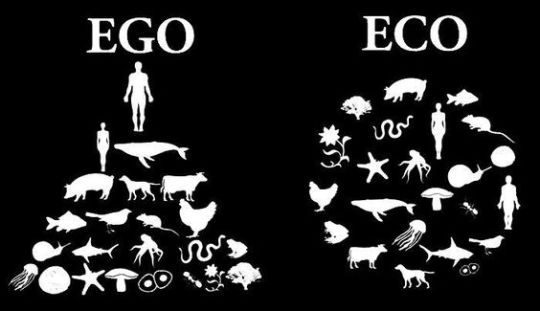Text
Trance
Trance is a state of semi-consciousness in which a person is not self-aware and is either altogether unresponsive to external stimuli or is selectively responsive. This state is necessary to carry out a successful travel outside the body and in ancient times, the most used tecniques were an ointment based on allucinogenic herbs and hydromancy.
HYDROMANCY IN THE PAST
Éva Pócs, a Hungarian ethnographer and folklorist, reports in her book about táltos, a folkloric figure with supernatural powers similar to a shaman, “Between the Living and the Dead“ a very interesting case: in a XVIII trial against three táltos, a witness claimed to have seen one of them go outside at dawn on the last day of Pentecost, pick up a plate, look into it and transform in a fish. After that, she disappeared for three days. Pócs considers this one of the most interesting details, since it describes a real technique of travel outside the body.
Andrea Romanazzi in his “Guida alle streghe in Italia” reports that on the day of the dead it was possible to see the shadows of the dead inside bowls of water. Italian historian Carlo Ginzburg in his “Storia Notturna“ reports that sometimes the Dominae Nocturnae tied to Witchcraft, like Fraw Holt, showed to the mortals the images of the dead and their destiny in basins of water. Still Ginzburg in his “Benandanti“, writes about a case that tells us how the procedure for hydromancy could be structured (the accused was trying to contact entities tied with Witchcraft):


The case of Lucrezia Peloso is very similar: during her process in 1582 the accuser affirmed:”I’m sayin that Lucretia, wife of Hieronimo Peloso does the anguistara and she told me that she is sure to be able to see the future and the past, that she did it multiple times and that it’s not against the church, that it’s actually a holy thing to do the anguistara.” The anguistara (jug) is a rite that put together christian and pagan proceedings: they would have either a virgin or a pregnant woman take water from three wells during the night of St. John and put it aside. When needed, a jug would be filled with it and either a virgin or a pregnant woman would kneel before a candle, recite three Pater Noster, three Hail Mary, the Prayer to Saint John and look into the jug. In the case of Giuliano Verdena we just read about a particular formula “White angel, holy angel”. This verse was widespread in multiple variants and employed for different purposes, like finding a lost or stolen possession. Some of the variants are:
White angel, black angel show me who took my money
White angel and holy angel, for your holyness and my purity, show me who took these money
White angel, Holy angel, for your holyness and my purity, show me the truth and who took [item]
This angel was probably a Spirit associated with water or the person’s guardian angel.
Francesca Medri, a woman that had always live in a small village and grew up in a magic culture that she had deeply assimilated, in one of her testimonies, told the inquisitor to have a sort of elf always around her, that in a precedent recount she had overlapped with the figure of an angel, that could be the same who helped her to find lost items during the anguistara rite.
EYE FIXITY
Sometimes, the scrying happened without a pre-established material base: it was pure and simple eye fixity a point. Emma Wilby in her “Cunning Folk and Familiar Spirits” recounts the episode of a man in the 1600s that saw the King and Queen of Fairies by gazing into falling fern seeds. Robert Kirk in his “The Secret Commonwealth”, reveals that scottish clairvoyants could see the Fairies thanks to eye fixity and that some could force it, by keeping said eye fixity for prolonged time. The pierced stone used to see Fairies that it’s often found in folklore, probably does the same thing.
To wrap it up, the main non-insomniis tecnique of contact with the Other Side in Traditional Witchcraft was tied to scrying either on a specific surface (hydromancy) or even without it, like the british cases. The aid of virgins, children and pregnant women is obviously not necessary, although the “angel white/black/holy” formula can be used, adapting certain parts.
[Translated and adapted from https://tradizioneitaliana.wordpress.com/2018/04/04/introduzione-alla-stregoneria-tradizionale-v-la-trance/]
Mentioned books:
Between the Living and the Dead: A Perspective on Witches and Seers in the Early Modern Age: A Perspective on Seers and Witches in Early Modern Age by Éva Pócs
Guida alle streghe in Italia by Andrea Romanazzi
Storia notturna. Una decifrazione del sabba (published in english as “Ecstasies: Deciphering the Witches’ Sabbath”) by Carlo Ginzburg
The Night Battles: Witchcraft and Agrarian Cults in the Sixteenth and Seventeenth Centuries by Carlo Ginzburg
Cunning Folk and Familiar Spirits: Shamanistic Visionary Traditions in Early Modern British Witchcraft and Magic by Emma Wilby
The Secret Commonwealth by Robert Kirk
411 notes
·
View notes
Text
Awake!

Introduction
The two part formula (2PF) for awakening is an ingenious little piece of technology. It was put forth by Kim Katami and I cannot say enough about it. Before this starts sounding like an infomercial, let me start off by just telling you the two parts.
1. Relax the entire body. Feel into the space of the body and allow it to decompress. Find bits of tension in different places and relax into it. Allow all of the body’s spaces, nooks, and crannies to be freed from their tension and come together as one seamless whole. Feel into the I-less sense throughout the body, the senses, and the mind. Simply being there together in this soup of wakeful relaxation.
2. Say out loud or in your head, “I, I, I. Me, me, me. Mine, mine, mine.” Feel whatever tension arises. Feel where the I-sense contorts in your body. Notice the way the feeling of your body changes and where your sense of self starts to localize. Just notice.
Then relax and start with part 1 and do it all over again.
Exposition
The 2PF is a potent form of self-inquiry. Most notably it deals with the sense of self that is bound up in the experience of the body and the experience of the mind. By undertaking this practice, you can examine the juxtaposition between how you feel when you rest in I-less relaxation and how you feel during provocation of your core-I or I-sense.
The point isn’t to change anything. It is to gain insight in the way things actually are. As such, this is a vipassana technique.
Because you aren’t doing anything, any insight doesn’t require belief or continued attention to maintain. You are simply investigating through felt wakefulness. Previous sensory constructs of the body that have gone uninvestigated are put under the microscope. The result is that you pick upon and free yourself from things your meditation practice might have overlooked. And the outcome is an awakening.
How to Practice
You can do this practice on your own and actually have the awakening they speak about in the free pdf you can find here. What I did, and what I highly recommend, is to reach out to Kim Katami and Open Heart, and seeing if someone is available to guide you through the practice over time. They do request a sliding scale donation for this service but it is surprisingly worth it. Again, not necessary though.
You do the technique as described above and in the free PDF. There’s nothing else to know besides that. However, there are some subtle points I picked up on during my guidance.
I will share them here:
During the first part, I found it helpful to start with my torso. I would feel my heart and chest and pelvis as supported by a continuous fundamental space. And I would allow myself to relax upon it. Then when I felt my legs or arms or neck/head, I would allow it to join with that space. Don’t worry about doing this perfectly. It will happen more thoroughly with practice. More important is to relax into the I-less sense.
When the I-sense is provoked in the body during the second part, it may feel uncomfortable. Even as something like tension. However, the point of the second part of the practice is not to find and relax tensions. That’s the first part. As it is, these tensions that arise during the second part are a result of the I-sense. So unless freedom from the I-sense is itself found, the game of relaxing such tensions would be endless. Therefore, during the second part, just keep noticing. Find out this I-sense that claims to be you but isn’t.
Either or both parts of the 2PF can be done with eyes open or closed.
I’ll go over my emails and add more here when I think of it. :D
TL;DR
Just read it, damnit. I think this technique is elegant in its simplicity and makes for an excellent practice when combined with a separate daily meditation practice. It really leveled up my path.
Namaste
437 notes
·
View notes
Text
The world's oldest story? Astronomers say global myths about 'seven sisters' stars may reach back 100,000 years https://phys.org/news/2020-12-world-oldest-story-astronomers-global.html
Holy shit, this is cool!
So many cultures call the Pleiades some variation of the "seven sisters" despite only having six visible stars. There only appear to be six because two of the stars are so close together as to appear as one.
The myths also mention one sister leaving or hiding to explain why there's only six. And based off observations and measurements, those two that are so close together used to be visibly separate. One literally has moved to hide.
And based off the similarities between the more commonly known Greek myth and the Aboriginal Australian myth, plus some other stuff, this myth could possibly even date back to when humanity still all resided in Africa!
75K notes
·
View notes
Text
In Buddhism, What Happens Between Death And Rebirth?
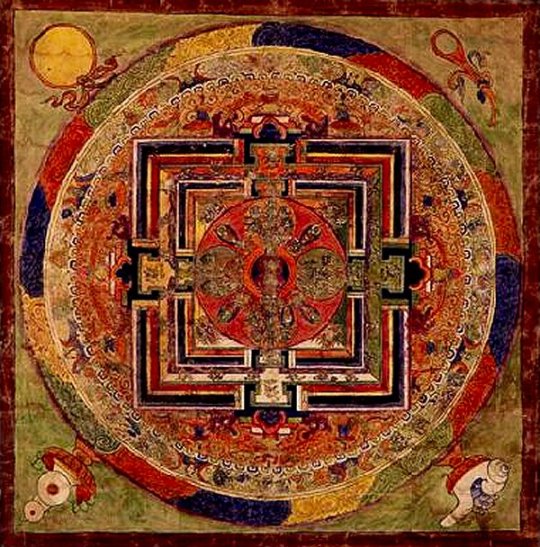
The “Tibetan Book of the Dead,” from the 1300s, was a Buddhist funerary text. According to the book, the wicked dead are said to endure bodily tortures after death before being reborn into the next life. Spiritual reflection will show there is no need to fear, the book reassures its readers, “because, in truth, your body is a natural form of emptiness.”
932 notes
·
View notes
Note
Hey I’m interested in the ins and outs of the Bucca but to be entirely honest I can’t make heads or tails of much of the literature around them. Is Bucca Dhu the same as Odin and is the Grand Bucca the same as Baphomet? Sorry if I sound a little rude.
Hello there.
You don’t sound rude, however, that is more complex of a question to answer than it may initially seem. For, you see, much of the information out there on Bucca is, in fact, quite varied. As such, it can be confusing to sift through for many people.
It would seem, from what I can tell, that your main points of reference when it comes to the figure of Bucca are the writings of Gemma Gary, so I’m going to start by trying to answer your question, framed in the context of the Craft as practiced by Gary and the coven of ‘Ros an Bucca.’ However, I feel compelled to follow that up with some broader historical/folkloric information on this mysterious spirit since, as I mentioned before, it seems like a lot of people are curious and confused when it comes to him. So without further ado, here is my impromptu essay…
Bucca & His Role in the Modern Craft
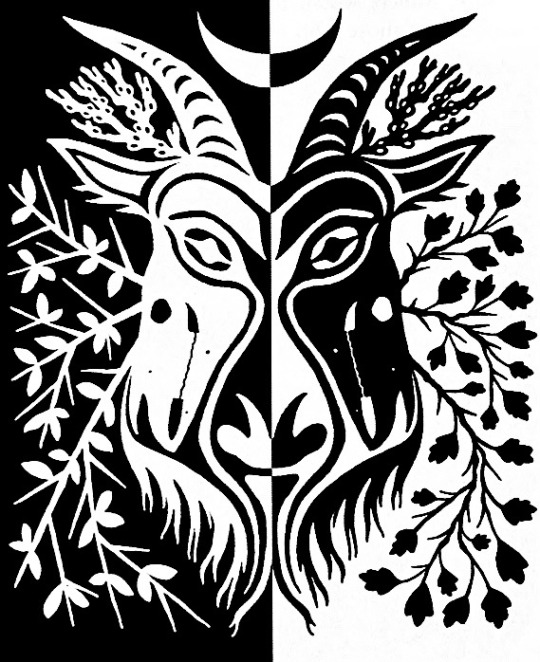
In many iterations and interpretations of the occultic arts, often categorized loosely as ‘modern traditional witchcraft,’ a deific figure frequently called 'The Horned One'—amongst innumerable similar titles—is regarded as the principal Witching God of a given tradition, as well as the chief initiator of the Cunning Flame itself. It is a commonly embraced belief within most currents of practice that tend to fall under this banner of ‘traditional witchcraft,’ that in Old Britain, the god of rural witches was often referred to as 'Devil'. It is ostensibly for this reason that this is still the case for many traditionally based practitioners in the surrounding areas, including the Crafters of Cornwall.
The Devil of the modern traditional witchcraft is, of course, rarely equated directly with Satan as he is depicted in Abrahamic faiths, but is instead regarded, as Gemma Gary puts it,
“an old chthonic folk-god of the land mysteries and seasonal changes (particularly the Autumn and Winter months), weather (particularly storms), death mysteries and the unseen forces and gnosis of use to witchcraft.” She likewise states that “To traditional witches and Cunning folk in Cornwall, in particular the Penwith region, the old Horned One is known as Bucca, and in West Devon as Buckie.” (‘Traditional Witchcraft: A Cornish Book of Ways’, pg. 77, by Gemma Gary)
One aspect of the Bucca found in Cornish lore, and embraced within the paradigm of Gary’s practice, is that he emanates into the dichotomy of ‘Bucca Gwidder’ and ‘Bucca Dhu’—otherwise known the ‘White God’ and the ‘Black God.’ Bucca Dhu is generally seen as the Devil of the previously discussed rural British folk-belief, and is associated with storms, darkness, and the winter months. Conversely, Bucca Gwidder is generally associated with fair weather, light, and the summer months. As is the case in many other, similar spiritual paradigms, Bucca Gwidder and Bucca Dhu dualistically embody the opposing forces of nature. They are intimately tied to one another, with one always giving rise to the other in an infinite cycle of death and rebirth. What’s more, while I can’t seem to find historical evidence for it at this point, Gemma Gary and the coven of Ros an Bucca venerate a mystic triplicity as well, in the form of a ‘conjoined’ Bucca, known as ‘Bucca Gam’, or the ‘Grand Bucca’. This union of opposing forces is said to result in the embodiment of an ‘Androgyne of the Wise’, a concept which mirrors the attainment of the Alchemical Magnum Opus—also called the Rebis (‘Double Matter’), or ‘Divine Hermaphrodite’—which was frequently identified with the attainment of complete wisdom. According to Gary,
“The Grand Bucca and the great Horned Androgyne, the Sabbatic Goat and Goddess-God of the witch-way. For some the Grand Bucca is simply referred to as Bucca, being the whole, with the two opposing aspects of that whole being given the distinction of Bucca Gwidder and Bucca Dhu. In Bucca we find the resolving of all opposites, the traditional candle betwixt the horns symbolising the light of All-Wisdom', and the mystic state of "One-pointedness' which is the ultimate goal of the witch and is the light that illumines the Cunning Path.” (‘Traditional Witchcraft: A Cornish Book of Ways’, pg. 84, by Gemma Gary)

Regarding the connections between Bucca Gam and Baphomet, I think it largely comes down to the fact that it’s relatively rare for modern occult practices to acknowledge deities who are explicitly intersex, with the best-known example of the Divine Androgyne being Baphomet—a being invented in by Crusaders in order to demonize the Knights Templar, and then eventually taken up and popularized by occultist Eliphas Levi.
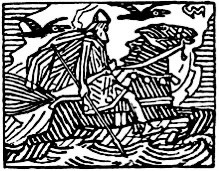
Now, when it comes to the question of syncretic connections between Bucca and Odin/Woden, it primarily comes down to their roles within the concept of the Wild Hunt. As many people know, the Wild Hunt is an important folkloric motif, which describes the shepherding of a ghostly procession across the sky by a powerful mythic figure; in the Germanic world, the leader of this convoy was commonly identified with Odin. Within much of the known Celtic lore, this phantom band was attended and directed by great spectral hounds, known by a wide variety of names. In Cornwall, the Wild Hunt is generally associated with folkloric figures known as the ‘Devil’s Dandy Dogs,’ also called ‘Dando’s Dogs,’ however, it may also be associated with Bucca. As Gary put it,
“On dark and cold nights of winter, Bucca Dhu is also described as riding a great black horse with blazing red eyes and smoky breath. Such lore surrounding Bucca Dhu is cognate with the widespread folk traditions of the Devil and Odin/Woden, as leaders of the Wild Hunt, which in British tradition runs along the Abbot's Way towards Cornwall; the last stop en route to the Otherworld.”
I am yet to come across anything in the folkloric record that matches these particular details, however, it would seem that there is some traditional connection there. For instance, Bucca does demonstrate characteristics of the Wild Hunt in certain versions of the classic Cornish play “Duffy and the Devil” (sometimes called “Duffy and the Bucca”.) This link to Odin is further cemented by the fact that Bucca Dhu is demonstrably connected to the Devil in Cornwall, and the Devil is sometimes said to lead the Wild Hunt, creating an archetypal framework within which both Odin and Bucca fit.
Now for the historical/folkloric background I promised…

According to most relevant sources, Bucca was traditionally described as a form of male Sea Spirit who inhabited coastal communities and their mines during storms—often in the form of a sort of hobgoblin. Many agree that the origins of the Bucca likely relate to faery beings such as the Pwca, Púca, and Puck of Welsh, Irish, and English folklore, respectively, though he also seems to share characteristics with the mermaids of Welsh and Breton mythology—known variably as Morgens, Morgans, or Mari-Morgans.
In one folktale, loosely known as ‘The Sea Bucca of Lamorna’, Bucca was a lonely creature who had once been a human prince, before being cursed by a witch. He was described as having the dark brown skin of a conger eel and a mass of seaweed for hair, as well as a penchant for swimming in the open waves, sitting among the rocks, and/or resting in hidden sea caverns. He was fond of children and assisted the Lamorna fishermen by driving fish and crabs into their nets and pots, but he was capable of terrible retribution, so they generally kept their distance, but left a part of their catch on the beach in order to mollify him.
However, it’s clear that many accounts on the matter clearly speak of the Bucca as more than simply a faery, or sea creature. As Cornish folklorist William Bottrell put it in his 1870 work ‘Traditions and Hearthside Stories of West Cornwall’
“It is uncertain whether Bucka can be regarded as one of the fairy tribe; Old people, within my remembrance, spoke of a Bucka Gwidden and a Bucka Dhu – by the former they meant good spirit, and by the latter an evil one, now known as Bucka boo.”
In keeping with Bottrell's account of the Bucca , a number of folkloric sources make note of Bucca’s manifold nature, referencing the existence of a ‘Bucca Gwydden/Gwydder’ (White Bucca) and ‘Bucca Dhu’ (Black Bucca). Each of these accounts agrees upon the respective benevolent and malevolent natures of these incarnations, though it’s interesting to note that there are considerably more reports of Bucca Dhu, or ‘Bucca Boo,’ than there are of Bucca Gwydder.
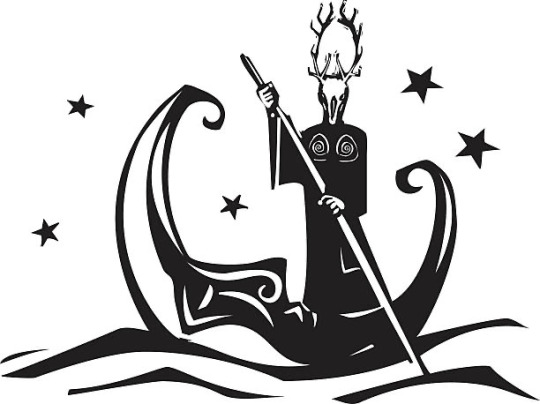
A 19th Century author on Cornish antiquities, named Rev W. S. Lach-Szyrma, proposed Bucca to be the cultural remnant of an ancient pagan Marine Deity once worshiped in the area, such as the British Nodens or the Irish Nechtans. While claims such as these are primarily conjecture, folkloric records do make note of food being left out on the beaches of the region as votive offerings. In the 19th century, for instance, there were reports of fishermen venerating Bucca with offerings of fish, which were left for the enigmatic Wight upon the shores of multiple local beaches. One of these beaches, particularly well known for its use as a site of propitiation, was located near the Cornish town of Newlyn, known formerly as Park an Grouse (Cornish for 'the field of the cross',) where a stone cross was said to once have stood.
These accounts, in turn, bear a certain resemblance to reports of offerings provided to the subterranean Knockers of the region, and as such, may signify some form of cultural continuity of pre-Christian Brythonic traditions. In keeping with this theme of the ‘Mine Faery’, it’s also worth noting that Bucca was sometimes described as a tin-mining spirit as well.
However, Bucca has additionally been historically associated with storms, and in particular, with the wind, which was said to carry his voice across the sea in parts of the West Country. In fact, in Penzance, it was once considered normal to refer to storms that came out of the Southwest as 'Bucca Calling.' For this reason, among others, it is possible that Bucca would have been more properly labeled a weather deity, as opposed to a deity of the sea itself—a distinction that Gemma Gary endorses enthusiastically in ‘A Cornish Book of Ways.’
In Jaqueline Simpson’s ‘A Dictionary of Celtic Mythology’, these marine, tempestuous, subterranean, and pastoral themes are tied together when it’s stated that
“In Cornwall, [Bucca] was ‘a spirit it was once thought necessary to propitiate’; fishermen, tin-miners, and harvesters would deliberately leave a few scraps of their food for him, and spill a few drops of beer.
Children were told to stop crying, or the bucca-boo would come and carry them off.
Some said there were two buccas, one white and kindly, the other black and dangerous.
Fishermen applied the name to a sea goblin of some sort, causing a 19th-century vicar [Lach-Szyrma] to refer to the bucca-boo as ‘the storm-god of the old Cornish’.”

The origins of Bucca’s association with the devil are murky, but they probably have something to do with the widespread equation of faeries with devils in early modern Britain. This doesn’t exactly account for the Bucca’s role as Witch-Father in traditionalist Cornish witchcraft, but those origins are also somewhat murky. It would seem that, at least on the historical record, this particular role was only truly appointed to Bucca around the time of Ros an Bucca’s formation. This isn’t to say, of course, that there weren’t a quiet few who venerated Bucca ongoingly in Cornwall, but given the inherently cultic nature of most covens, this simply isn’t verifiable. However, W.S. Lach-Szyrma’s assertions regarding Bucca as “storm god of the old Cornish” do make explicit reference to the ties between Bucca and the Devil, such as in his 1884 ‘Newlyn and its Piers,’ where he wrote that in the Middle Ages, Bucca was “represented as the Devil.” This syncretism is also briefly highlighted in Margaret Ann Courtney’s 1890 book ‘Cornish Feasts and Folk-lore’, when it’s explained that
“In the adjacent parish of Newlyn, a fishing village, the favourite resort of artists, a great deal of gossiping on summer evenings goes on around the small wells (here called peeths) [. . .] Opposite one of these wells, towering over St. Peter’s church, is a striking pile of rocks, “Tolcarn.” On the summit are some curious markings in the stones, which, when a child, I was told were the devil’s footprints; but the following legend, which I give on the authority of the Rev.W. S. Lach-Szyrma, Vicar of St. Peter’s, is quite new to me:—
‘The summit of the rock is reticulated with curious veins of elvan [quartz-porphyry], about which a quaint Cornish legend relates that the Bucca-boo, or storm-god of the old Cornish, once stole the fishermens’ net. Being pursued by Paul choir, who sang the Creed, he flew to the top of Paul hill and thence over the Coombe to Tolcarn, where he turned the nets into stone.’”

With all of these variable, sometimes even conflicting, accounts of who and what the Bucca is, it's really not a shock that many people find themselves feeling lost when it comes to understanding him, but I hope that this can help to elucidate the subject for some. Resources on the subject are sparse, but they do exist, and a fascinating patchwork of historical and modern perspectives begins to reveal itself if you look for it. Yet, like most things in life, his identity will continue to unfold, shift, and evolve over the years to come.
��
Art Credits (In Order of Appearance):
‘Traditional Witchcraft: A Cornish Book of Ways’ —Gemma Gary
‘Dogme et Rituel de la Haute Magie’ — Éliphas Lévi
Odin Woodcut by Gerhard Munthe (1849-1929)
‘Faeries’ — Brian Froud and Alan Lee
Internet Clipart — Unknown Artist
‘The History of Witches and Wizards’ (1720)
‘Robin Good-Fellow, His Mad Pranks and Merry Jests.’ (1639)
579 notes
·
View notes
Note
Hey I’m interested in the ins and outs of the Bucca but to be entirely honest I can’t make heads or tails of much of the literature around them. Is Bucca Dhu the same as Odin and is the Grand Bucca the same as Baphomet? Sorry if I sound a little rude.
Hello there.
You don’t sound rude, however, that is more complex of a question to answer than it may initially seem. For, you see, much of the information out there on Bucca is, in fact, quite varied. As such, it can be confusing to sift through for many people.
It would seem, from what I can tell, that your main points of reference when it comes to the figure of Bucca are the writings of Gemma Gary, so I’m going to start by trying to answer your question, framed in the context of the Craft as practiced by Gary and the coven of ‘Ros an Bucca.’ However, I feel compelled to follow that up with some broader historical/folkloric information on this mysterious spirit since, as I mentioned before, it seems like a lot of people are curious and confused when it comes to him. So without further ado, here is my impromptu essay…
Bucca & His Role in the Modern Craft

In many iterations and interpretations of the occultic arts, often categorized loosely as ‘modern traditional witchcraft,’ a deific figure frequently called 'The Horned One'—amongst innumerable similar titles—is regarded as the principal Witching God of a given tradition, as well as the chief initiator of the Cunning Flame itself. It is a commonly embraced belief within most currents of practice that tend to fall under this banner of ‘traditional witchcraft,’ that in Old Britain, the god of rural witches was often referred to as 'Devil'. It is ostensibly for this reason that this is still the case for many traditionally based practitioners in the surrounding areas, including the Crafters of Cornwall.
The Devil of the modern traditional witchcraft is, of course, rarely equated directly with Satan as he is depicted in Abrahamic faiths, but is instead regarded, as Gemma Gary puts it,
“an old chthonic folk-god of the land mysteries and seasonal changes (particularly the Autumn and Winter months), weather (particularly storms), death mysteries and the unseen forces and gnosis of use to witchcraft.” She likewise states that “To traditional witches and Cunning folk in Cornwall, in particular the Penwith region, the old Horned One is known as Bucca, and in West Devon as Buckie.” (‘Traditional Witchcraft: A Cornish Book of Ways’, pg. 77, by Gemma Gary)
One aspect of the Bucca found in Cornish lore, and embraced within the paradigm of Gary’s practice, is that he emanates into the dichotomy of ‘Bucca Gwidder’ and ‘Bucca Dhu’—otherwise known the ‘White God’ and the ‘Black God.’ Bucca Dhu is generally seen as the Devil of the previously discussed rural British folk-belief, and is associated with storms, darkness, and the winter months. Conversely, Bucca Gwidder is generally associated with fair weather, light, and the summer months. As is the case in many other, similar spiritual paradigms, Bucca Gwidder and Bucca Dhu dualistically embody the opposing forces of nature. They are intimately tied to one another, with one always giving rise to the other in an infinite cycle of death and rebirth. What’s more, while I can’t seem to find historical evidence for it at this point, Gemma Gary and the coven of Ros an Bucca venerate a mystic triplicity as well, in the form of a ‘conjoined’ Bucca, known as ‘Bucca Gam’, or the ‘Grand Bucca’. This union of opposing forces is said to result in the embodiment of an ‘Androgyne of the Wise’, a concept which mirrors the attainment of the Alchemical Magnum Opus—also called the Rebis (‘Double Matter’), or ‘Divine Hermaphrodite’—which was frequently identified with the attainment of complete wisdom. According to Gary,
“The Grand Bucca and the great Horned Androgyne, the Sabbatic Goat and Goddess-God of the witch-way. For some the Grand Bucca is simply referred to as Bucca, being the whole, with the two opposing aspects of that whole being given the distinction of Bucca Gwidder and Bucca Dhu. In Bucca we find the resolving of all opposites, the traditional candle betwixt the horns symbolising the light of All-Wisdom', and the mystic state of "One-pointedness' which is the ultimate goal of the witch and is the light that illumines the Cunning Path.” (‘Traditional Witchcraft: A Cornish Book of Ways’, pg. 84, by Gemma Gary)

Regarding the connections between Bucca Gam and Baphomet, I think it largely comes down to the fact that it’s relatively rare for modern occult practices to acknowledge deities who are explicitly intersex, with the best-known example of the Divine Androgyne being Baphomet—a being invented in by Crusaders in order to demonize the Knights Templar, and then eventually taken up and popularized by occultist Eliphas Levi.

Now, when it comes to the question of syncretic connections between Bucca and Odin/Woden, it primarily comes down to their roles within the concept of the Wild Hunt. As many people know, the Wild Hunt is an important folkloric motif, which describes the shepherding of a ghostly procession across the sky by a powerful mythic figure; in the Germanic world, the leader of this convoy was commonly identified with Odin. Within much of the known Celtic lore, this phantom band was attended and directed by great spectral hounds, known by a wide variety of names. In Cornwall, the Wild Hunt is generally associated with folkloric figures known as the ‘Devil’s Dandy Dogs,’ also called ‘Dando’s Dogs,’ however, it may also be associated with Bucca. As Gary put it,
“On dark and cold nights of winter, Bucca Dhu is also described as riding a great black horse with blazing red eyes and smoky breath. Such lore surrounding Bucca Dhu is cognate with the widespread folk traditions of the Devil and Odin/Woden, as leaders of the Wild Hunt, which in British tradition runs along the Abbot's Way towards Cornwall; the last stop en route to the Otherworld.”
I am yet to come across anything in the folkloric record that matches these particular details, however, it would seem that there is some traditional connection there. For instance, Bucca does demonstrate characteristics of the Wild Hunt in certain versions of the classic Cornish play “Duffy and the Devil” (sometimes called “Duffy and the Bucca”.) This link to Odin is further cemented by the fact that Bucca Dhu is demonstrably connected to the Devil in Cornwall, and the Devil is sometimes said to lead the Wild Hunt, creating an archetypal framework within which both Odin and Bucca fit.
Now for the historical/folkloric background I promised…

According to most relevant sources, Bucca was traditionally described as a form of male Sea Spirit who inhabited coastal communities and their mines during storms—often in the form of a sort of hobgoblin. Many agree that the origins of the Bucca likely relate to faery beings such as the Pwca, Púca, and Puck of Welsh, Irish, and English folklore, respectively, though he also seems to share characteristics with the mermaids of Welsh and Breton mythology—known variably as Morgens, Morgans, or Mari-Morgans.
In one folktale, loosely known as ‘The Sea Bucca of Lamorna’, Bucca was a lonely creature who had once been a human prince, before being cursed by a witch. He was described as having the dark brown skin of a conger eel and a mass of seaweed for hair, as well as a penchant for swimming in the open waves, sitting among the rocks, and/or resting in hidden sea caverns. He was fond of children and assisted the Lamorna fishermen by driving fish and crabs into their nets and pots, but he was capable of terrible retribution, so they generally kept their distance, but left a part of their catch on the beach in order to mollify him.
However, it’s clear that many accounts on the matter clearly speak of the Bucca as more than simply a faery, or sea creature. As Cornish folklorist William Bottrell put it in his 1870 work ‘Traditions and Hearthside Stories of West Cornwall’
“It is uncertain whether Bucka can be regarded as one of the fairy tribe; Old people, within my remembrance, spoke of a Bucka Gwidden and a Bucka Dhu – by the former they meant good spirit, and by the latter an evil one, now known as Bucka boo.”
In keeping with Bottrell's account of the Bucca , a number of folkloric sources make note of Bucca’s manifold nature, referencing the existence of a ‘Bucca Gwydden/Gwydder’ (White Bucca) and ‘Bucca Dhu’ (Black Bucca). Each of these accounts agrees upon the respective benevolent and malevolent natures of these incarnations, though it’s interesting to note that there are considerably more reports of Bucca Dhu, or ‘Bucca Boo,’ than there are of Bucca Gwydder.

A 19th Century author on Cornish antiquities, named Rev W. S. Lach-Szyrma, proposed Bucca to be the cultural remnant of an ancient pagan Marine Deity once worshiped in the area, such as the British Nodens or the Irish Nechtans. While claims such as these are primarily conjecture, folkloric records do make note of food being left out on the beaches of the region as votive offerings. In the 19th century, for instance, there were reports of fishermen venerating Bucca with offerings of fish, which were left for the enigmatic Wight upon the shores of multiple local beaches. One of these beaches, particularly well known for its use as a site of propitiation, was located near the Cornish town of Newlyn, known formerly as Park an Grouse (Cornish for 'the field of the cross',) where a stone cross was said to once have stood.
These accounts, in turn, bear a certain resemblance to reports of offerings provided to the subterranean Knockers of the region, and as such, may signify some form of cultural continuity of pre-Christian Brythonic traditions. In keeping with this theme of the ‘Mine Faery’, it’s also worth noting that Bucca was sometimes described as a tin-mining spirit as well.
However, Bucca has additionally been historically associated with storms, and in particular, with the wind, which was said to carry his voice across the sea in parts of the West Country. In fact, in Penzance, it was once considered normal to refer to storms that came out of the Southwest as 'Bucca Calling.' For this reason, among others, it is possible that Bucca would have been more properly labeled a weather deity, as opposed to a deity of the sea itself—a distinction that Gemma Gary endorses enthusiastically in ‘A Cornish Book of Ways.’
In Jaqueline Simpson’s ‘A Dictionary of Celtic Mythology’, these marine, tempestuous, subterranean, and pastoral themes are tied together when it’s stated that
“In Cornwall, [Bucca] was ‘a spirit it was once thought necessary to propitiate’; fishermen, tin-miners, and harvesters would deliberately leave a few scraps of their food for him, and spill a few drops of beer.
Children were told to stop crying, or the bucca-boo would come and carry them off.
Some said there were two buccas, one white and kindly, the other black and dangerous.
Fishermen applied the name to a sea goblin of some sort, causing a 19th-century vicar [Lach-Szyrma] to refer to the bucca-boo as ‘the storm-god of the old Cornish’.”

The origins of Bucca’s association with the devil are murky, but they probably have something to do with the widespread equation of faeries with devils in early modern Britain. This doesn’t exactly account for the Bucca’s role as Witch-Father in traditionalist Cornish witchcraft, but those origins are also somewhat murky. It would seem that, at least on the historical record, this particular role was only truly appointed to Bucca around the time of Ros an Bucca’s formation. This isn’t to say, of course, that there weren’t a quiet few who venerated Bucca ongoingly in Cornwall, but given the inherently cultic nature of most covens, this simply isn’t verifiable. However, W.S. Lach-Szyrma’s assertions regarding Bucca as “storm god of the old Cornish” do make explicit reference to the ties between Bucca and the Devil, such as in his 1884 ‘Newlyn and its Piers,’ where he wrote that in the Middle Ages, Bucca was “represented as the Devil.” This syncretism is also briefly highlighted in Margaret Ann Courtney’s 1890 book ‘Cornish Feasts and Folk-lore’, when it’s explained that
“In the adjacent parish of Newlyn, a fishing village, the favourite resort of artists, a great deal of gossiping on summer evenings goes on around the small wells (here called peeths) [. . .] Opposite one of these wells, towering over St. Peter’s church, is a striking pile of rocks, “Tolcarn.” On the summit are some curious markings in the stones, which, when a child, I was told were the devil’s footprints; but the following legend, which I give on the authority of the Rev.W. S. Lach-Szyrma, Vicar of St. Peter’s, is quite new to me:—
‘The summit of the rock is reticulated with curious veins of elvan [quartz-porphyry], about which a quaint Cornish legend relates that the Bucca-boo, or storm-god of the old Cornish, once stole the fishermens’ net. Being pursued by Paul choir, who sang the Creed, he flew to the top of Paul hill and thence over the Coombe to Tolcarn, where he turned the nets into stone.’”

With all of these variable, sometimes even conflicting, accounts of who and what the Bucca is, it's really not a shock that many people find themselves feeling lost when it comes to understanding him, but I hope that this can help to elucidate the subject for some. Resources on the subject are sparse, but they do exist, and a fascinating patchwork of historical and modern perspectives begins to reveal itself if you look for it. Yet, like most things in life, his identity will continue to unfold, shift, and evolve over the years to come.
—
Art Credits (In Order of Appearance):
‘Traditional Witchcraft: A Cornish Book of Ways’ —Gemma Gary
‘Dogme et Rituel de la Haute Magie’ — Éliphas Lévi
Odin Woodcut by Gerhard Munthe (1849-1929)
‘Faeries’ — Brian Froud and Alan Lee
Internet Clipart — Unknown Artist
‘The History of Witches and Wizards’ (1720)
‘Robin Good-Fellow, His Mad Pranks and Merry Jests.’ (1639)
579 notes
·
View notes
Text
Halloween Rite of Flight (indoor version)
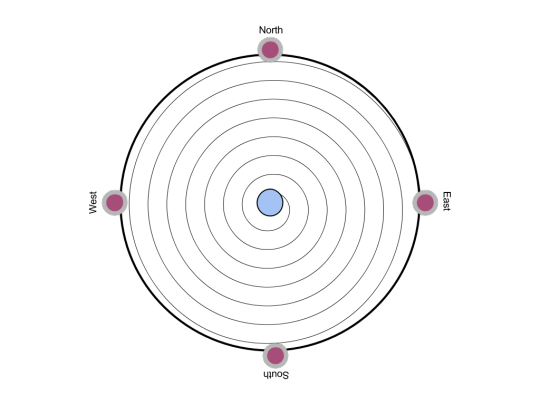
Upon the eve of Halloween, witches, fairies, devils, and spirits can be seen taking flight in hoards as a Wild hunt in the night. They dance and soar in the sky seeking fun and mischief. You too, as a witch, can join these hoards and run within the hunt; to chase and claim the mighty game of the night.
Though not everyone can find a place outside to hold the rite, or even have pleasant weather, one can still take flight with the mighty hoards from the comfort of their own home.
For this rite, you will require the following:
A staff, wand, stang, rod, or broom made of apple wood
A mask
a bowl or cauldron (Copper would be best, though other materials work. Avoid iron)
4 painted stones (one of a yellow toad, one of a red snake, one of a black goat, and one of a white hare)
4 empty jars with lids
Wine (or juice)
Water
a black stone (Obsidian or black onyx works best)
cord, chalk, or masking tape
Optional: Flying ointment, herbs to smoke, incense, oils, or whatever you need to help travel
Recommended: An alarm or timer
If you like in an apartment or with others, I would suggest earplugs
Go to a room in your home you can be completely alone. Mark an area in the room as a circle using either chalk (if you have a hardwood floor or cement), cord, or masking tape. With the apple rod, you will trace the outline of a large circle. Step inside and with the apple rode, you will place a cloth or piece of paper, with this symbol, at the center of the circle. At this time, I would suggest setting your timer or alarm to help if needed.
Place the cauldron of water upon this symbol.

You will take the black stone and place it into the cauldron and let it sink to the bottom. Once this is done, you will take a few minutes to breath, relax, and get into the right mind.
During this time, you may partake in wine, apply flying ointment or oils, smoke or light desired herbs and incense, and so on.
When the time is ready, you will stand and grab the apple rod, 4 painted stones, and the wine.
-Place the yellow stone at the eastern corner: “Spirit of Gold, I call you here. The toad of holy cross-roads show me where the path lays. Drink and make merry.”
Once spoken, you will take a drink.
-Place the red stone at the southern corner: “Spirit of Blood, I call you here. The serpent of kept secrets show me where the path lays. Drink and make merry.”
Once spoken, you will take a drink.
-Place the black stone at the western corner: “Spirit of Dark, I call you here. The goat of ecstatic acts show me where the path lays. Drink and make merry.”
Once spoken, you will take a drink.
-Place the white stone at the northern corner: “Spirit of Snow, I call you here. The hare of witches transformed show me where the path lays. Drink and make merry.”
Once spoken, you will take a drink.
With the apple rode, you will, starting at the northern corner, trace the outline of the circle in a clockwise motion. As you do, say these words strong and true.
“I shall astride
this night for a ride.
Devils and I together:
through the veil thin.
In, out, and all through,
this night is ours.
By thorny bramble,
and bones most dead.
Spirits take flight!”
Say this as you trace the circle three times. Upon returning to the northern position for the third time, you will take the wine and pour it into each jar, then close the lids shut. Do this counterclockwise. “The unseen is forged, the unknown is known, all of this for me”
Take your place to the eastern corner and face towards the center of the circle at the cauldron. You will hold your apple rod high into the sky and call out to the spirits.
“O, staff of apple wood so fair,
Lead me on land and through the air,
Above the cliffs and over the sea,
For with my lover I must be!”
Point the rod towards the cauldron in the center of the circle, and you shall now enter into the circle. You will cross into the otherworld. It is time to trace the spiral and descend into the unseen world of spirits.
Keep your apple rod pointed towards the caudron. On the arm holding the apple rode, you will rest your chin upon your shoulder. In a slow and hunched back movement, you will move in a spiral within the circle in a counter-clockwise motion. You must continue to stare down the rod and to the cauldron.
Take your time to walk in the spiral inside the circle. You will begin to chant the following:
“Horse and Hattock! Horse and Go! Horse and Pellatis, Ho Ho!”
You will start slow and in a whisper like tone, but you will begin to speak faster and louder as you move farther down the spiral towards the center. Your breath will grow faster, and you will begin to pant, but all this time you will not move faster than your slow and hunched pace. Keep your eyes focused on the cauldron, or else this is all for not.
When you finally reach the center, you shall grip the apple rod with both hands and sit in front of the cauldron. Stare into the water and focus your sight to the stone. Continue this, until you feel yourself lifted. You can allow your body to drop.
When you finally return to your body, or your alarm wakes you, take a moment to get adjusted back into your body. You may need to rub your skin, shake your hands and arms, and whatever else you need to do.
You will go to the eastern corner and point the rod to the sky, then hit the ground with it. “This space shall now return to the world that is seen, the physical is connected once again.”
Take the rod and break the dirt circle to create yourself an exit. Collect your items, making sure to dispose of the water, and then pour the wine outside for the spirits. The paper with the sigil should either be torn to shreds and thrown away, or it should be burnt to ashes.
It would be best to clean the room with a broom, salt water, or whatever method you use to do so.
Outdoor version: HERE
395 notes
·
View notes
Text
Magic circles were originally cast with flour. From Wikipedia: Zisurrû, meaning “magic circle drawn with flour was an ancient Mesopotamian means of delineating, purifying and protecting from evil by the enclosing of a ritual space in a circle of flour. The choice of flour was crucial to the purpose of the ritual, with šemuš-flour reserved (níĝ-gig) for repelling ghosts, wheat-flour for rituals invoking personal gods and šenuḫa-barley to encircle beds, presumably to counter disease-carrying demons.
792 notes
·
View notes
Text
We celebrate the return of the Sun King, our Joyous God. May we grow young and strong in spring just as you do, and our blooms stir the smile of our Mother.
0 notes
Text
To Make Oneself Invisible
“Collect seven black beans. Start the rite on the day of Mercury, before Sunrise. Then take the head of a dead man, and put one of the black beans in his mouth, two in his nostrils, two in his eyes and two in his ears. Then make upon his head the character of Morail. When you have done this, bury the head, with the face upwards, and for nine days, before sunrise, water it each morning with excellent brandy. On the eighth day you will find the spirit mentioned, who will say to you: What wilt thou? You will reply: I am watering my plant. Then the Spirit will say: Give me the bottle, I desire to water it myself. In answer, refuse him this, even though he will ask you again. Then he will reach out with his hand and will display to you that same figure which you have drawn upon the head. Now you can be sure that it is the right spirit, the spirit of the head. There is a danger that another one might want to trick you which would have evil consequences and in that case your operation would not succeed. Then you may give him the bottle, and he will water the head and leave. On the next day, which is the ninth, when you return you will find that the beans are germinating. Take them and put them in your mouth, and look at yourself in a mirror. If you can see nothing it is well. Test the others in the same way, either in your own mouth, or in that of a child. Those which do not confer invisibility are to be reburied with the head. “
- Grimoire Verum
412 notes
·
View notes
Photo
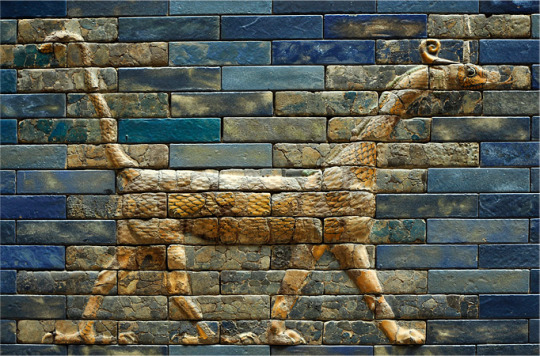

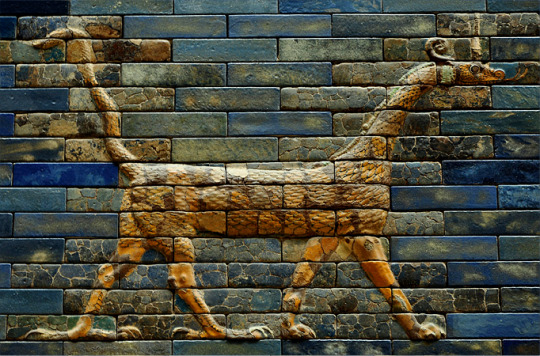
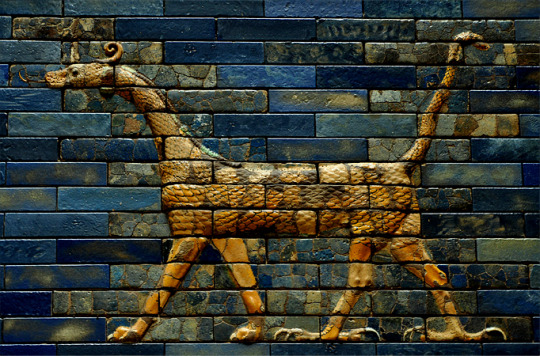
Dragons of Babylon
Ishtar Gate, Pergamon Museum, Berlin.
159 notes
·
View notes
Photo
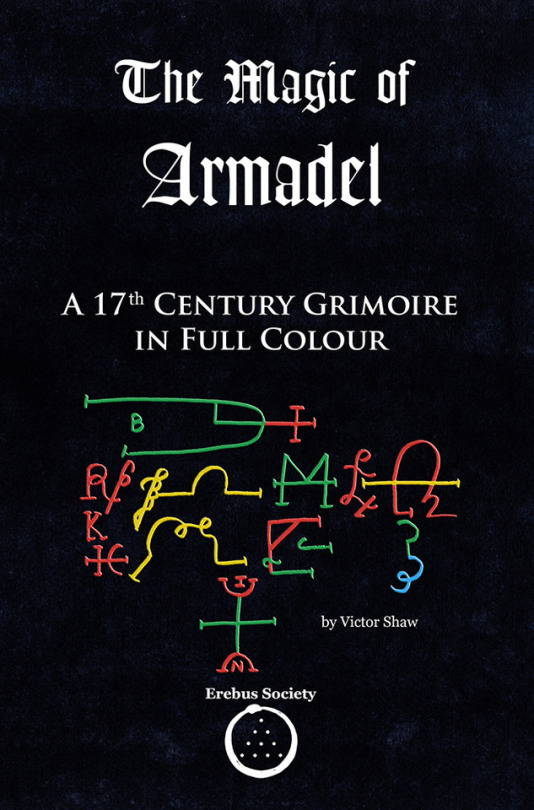
We are glad to announce the Official release of our new Pubication:
⚜🔯⚜🔯⚜🔯⚜🔯⚜🔯⚜🔯⚜🔯⚜🔯⚜🔯⚜🔯⚜🔯⚜🔯⚜ The Magic of Armadel: A 17th Century Grimoire in Full Colour ⚜🔯⚜🔯⚜🔯⚜🔯⚜🔯⚜🔯⚜🔯⚜🔯⚜🔯⚜🔯⚜🔯⚜🔯⚜
The Grimoire of Armadel is a book of Celestial Magick and contains information, seals, and sigils of Angels, Demons and other Celestial Spirits. It is classed as a Christian/Theistic Grimoire, and it was first translated by S.L. McGregor Mathers in the late 1890’s from the original French and Latin manuscript that can be found in the Biblotheque l'Arsenal in Paris. The only recreation of the book with enhanced and well defined illustrations in full colour that is available to the general public. 🌕🌔🌓🌒🌑🌘🌗🌖🌕 Get your copy here: >>> http://bit.ly/ArmadelColor 🌕🌔🌓🌒🌑🌘🌗🌖🌕
66 notes
·
View notes
Text
Philosophical Theism
Philosophical theism is the belief that a deity exists (or must exist) independent of the teaching or revelation of any particular religion.[1] It represents belief in a personal God entirely without doctrine. Some philosophical theists are persuaded of a god’s existence by philosophical arguments, while others consider themselves to have a religious faith that need not be, or could not be, supported by rational argument.
source: wiki
24 notes
·
View notes
Text
ATTENTION MYTHOLOGY PEOPLE, WITCHES, CHRISTIANS, JEWS, MUSLIMS, AND ANYONE INTERESTED IN LEARNING ABOUT DIFFERENT RELIGIONS:
This Site here http://www.sacred-texts.com/index.htm Has almost EVERY SINGLE SACRED TEXT YOU COULD THINK OF. From the Quran, the Bible, the Poetic Edda, Nostradamus Prophecies, Books of Shadows, etc. ALL THERE FOR FREE!!!! and with links to purchase hard copies! It’s a great resource and i wanted to share it with you!
1K notes
·
View notes
Photo
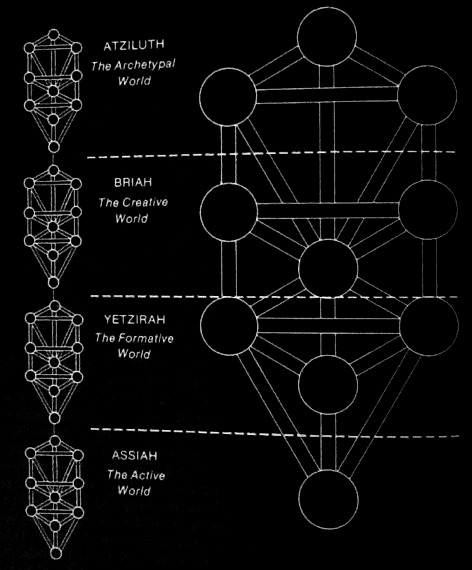
Four Worlds in Kabbalah. The Four Worlds are the comprehensive categories of Spiritual Realms in Kabbalah in the descending chain of Existence. The concept of “Worlds” denotes the emanation of creative Lifeforce from the Ein Sof Divine Infinite, through progressive, innumerable Tzimtzumim. Atziluth (אֲצִילוּת), meaning World of Emanation. On this level the light of the Ein Sof (Infinite Divine “Without End”) radiates and is still united with its source. This supernal revelation therefore precludes the Souls and Divine Emanations in Atzilus from sensing their own existence. In Atzilus the 10 Sephiroth emerge in revelation, with Chochma (Wisdom) dominating, all is nullification of Essence to Divinity, not considered created and separate. The last Sephirah Malchut (Kingdom) is the “Divine Speech” of Genesis 1, through which lower Worlds are sustained. Beri'ah (בְּרִיאָה), meaning World of Creation. On this level is the first concept of Creatio ex Nihilo, however without yet shape or form, as the creations of Beriah sense their own existence, though in nullification of being to Divinity. Beriah is the realm of the “Divine Throne”, denoting the Sephiroth configuration of Atzilus descending into Beriah like a King on a Throne. The Sephirah Binah (Understanding) predominates, Divine intellect. Also called the “Higher Garden of Eden”. The Highest Ranking Angels are in Beriah. Yetzirah (יְצִירָה), meaning World of Formation. On this level the created being assumes shape and form. The emotional Sephiroth Chesed to Yesod predominate, the souls and angels of Yetzirah worship through Divine emotion and striving, as they sense their distance from the Understanding of Beriah. This ascent and descent channels the Divine vitality down through the Worlds, furthering the Divine purpose. Therefore, in Yetzirah are the main angels, such as Seraphim, denoting their burning consummation in Divine emotion. Also called the “Lower Garden of Eden”. Assiah (עֲשִׂיָּה), meaning World of Action. On this level the creation is complete, differentiated and particular, due to the concealment and diminution of the Divine vitality. However, it is still on a spiritual level. The angels of Asiyah function on the active level, as the sephirah Malchut (fulfilment in Kingship) predominates. Below spiritual Asiyah is Asiyah Gashmi (“Physical Asiyah”), the final, lowest realm of Existence, our material Universe with all its creations. The last two Sephiroth of Asiyah channel the Lifeforce into Physical Asiyah.
1K notes
·
View notes
